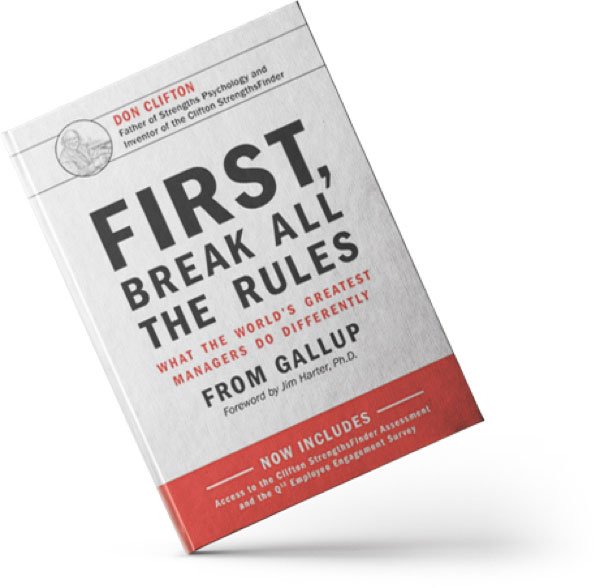Over the past few years, we have seen the use of Employer of Record arrangements (‘EOR’) become the ‘go-to’ model when entities are looking to expand overseas. Given the flexibility and ease of working with EORs it’s quite obvious why so many companies are choosing this approach to scale their international profile rapidly.
Companies are using the model to scale at pace into new countries, to stand up decentralised teams, or allow UK staff to work remotely – all using EORs as the main conduit to exploit growth.
Below we shine a light on some of the areas that are not always raised by EOR providers and therefore are potentially leaving businesses open to unnecessary tax risks – which are then being picked up during diligence events on fundraises or liquidity events.
SO, WHAT’S THE ISSUE?
Businesses that are looking to expand overseas may originate the engagement through local employment solutions or through one of the growing global platforms now providing this service. According to this model, the originating business retains operational control of its overseas ‘team members’ and manages their work as an integrated part of the business; whilst formally and legally, the ‘team members’ are employees of an overseas independent third party, i.e. the local ‘Employer of Record’. As a result of such arrangements, the business may face an overseas permanent establishment exposure in the local jurisdiction.
AND… WHAT DOES THAT MEAN?
The concept of permanent establishment revolves around the taxation of value created by economic activities performed locally. There is no universal common definition on which businesses and their advisers can rely on and can differ for different jurisdictions. As a result, we will consider below a high-level summary of the key areas that companies should consider such that they are in a position to know when to seek advice.
LEGALS VS REALITY
Under a typical EOR arrangement, an originating company that wishes to employ an international team in an overseas jurisdiction enters into a framework agreement with an employment solution provider. As part of the engagement, the company sets out details and terms of the employment of each overseas employee.
The actual employment contractual relationship with the individuals selected by the company is entered into by a local entity located in the specific country. However, in practice, the company retains full operational control of the employees and manages their work.
Under the terms of the arrangement, the originating company exercises full control over the selected overseas individuals. In other words, it retains absolute discretion as to how, where and when work is to be performed. This includes, amongst other things, direction as to the following key elements:
- Place of performance of activities;
- Working hours and practices;
- Equipment and tools necessary for performance of work.
In summary, the company habitually provides the selected individuals with the space and equipment necessary to perform their duties even if such individuals are formally employees of an independent third party, i.e. the local Employer of Record.
Due to the particular features of the arrangements mentioned above, the overseas activities undertaken by a company through selected individuals via an EOR engagement may in certain circumstances, create a permanent establishment exposure in the various jurisdictions in which the company is going to operate.
HOW CAN WE DETERMINE IF A PERMANENT ESTABLISHMENT IS CREATED?
There are a number of ways a company can create a permanent establishment in an overseas country, we have outlined the main ways below.
Fixed place of business
The first set of circumstances to create a permanent establishment exposure refers to the availability of a place of business in the particular overseas jurisdiction concerned.
In general terms, this exposure can materialise when individuals dependent on the company, regardless of any direct employment relationship, conduct the business of the company at a specific geographical place of business (e.g. premises, facilities, site etc.) with a certain degree of permanence. For example, development centres can create a permanent establishment exposure if the development activities are carried out at business premises for a certain number of months. A six month period is typically considered the threshold above which a permanent establishment exposure can be created bearing in mind each country’s practice is not necessarily consistent due to the interpretation and application of the rules under discussion. As a result, a specific country review may be needed.
In addition, it’s important to bear in mind that home work arrangements are unlikely to create a fixed place of business permanent establishment exposure. This is due to the fact that the private residence of an individual can be considered a place of business in only very limited circumstances.
Dependent agent
The second set of circumstances that may create a permanent establishment exposure refers to persons (individual or company) that act on behalf of the business and habitually exercise a contracting authority in the particular jurisdiction concerned. Quite often this role is associated with sales individuals who have been legally contracted through an EOR arrangement, but can also legally bind the originating company to contractual relationships in the jurisdiction in question.
Services
The last set of circumstances under which a permanent establishment exposure may be created revolves around the local provision of services with a certain degree of regularity and/or permanence. The type of services covered in these particular instances is quite broad and it typically includes services of consulting and/or technical nature. In addition, it’s important to consider that the type of exposure under discussion can arise regardless of whether the services are provided for the benefit of third parties. Therefore, the provision of ‘internal’ services (to, for example, a parent company based on the UK) may be equally captured.
ARE THERE ANY “EXEMPTED” ACTIVITIES?
It is important to bear in mind that not every overseas operation faces a permanent establishment risk. In fact, both domestic and international provisions contain very important exemptions.
Broadly speaking, a permanent establishment exposure is not typically created if:
- The activities of the overseas individuals engaged by the company are of auxiliary or preparatory nature (e.g. market research, information collecting, clerical etc); and/or
- The individuals are independent both legally and economically of the engaging company. This means that the individuals perform their services according to their own view, expertise and methods so the engaging company does not direct the manner in which the service provider carries on his own business. This situation is in stark contrast with the way UK based businesses are typically using EOR arrangements where the originating company retains full operational control of the overseas employees and absolute discretion as to how, where and when work is to be performed – in which case it cannot be deemed to be an exempted activity;
WHAT ARE THE KEY FACTORS TO CONSIDER IF I HAVE AN EOR AND I NEED TO ASSESS MY RISK OF PERMANENT ESTABLISHMENT?
Any company that is currently using an EOR solution should review the existing arrangements and the functional profile of the activities locally performed by the individuals engaged through such arrangements.
Any originating company should consider the following:
- Are business premises at the disposal of the individuals engaged through an EOR arrangement with a degree of regularity? Have such premises been used for several months (say 6 months or more) or shorter intervals but during a prolonged period (say 2 years)?
- Are the activities carried out at such premises of auxiliary and preparatory nature such as for example market research, info/data gathering and/or operational admin?
- Does a development team create a permanent establishment? Do the developers perform their services on the basis of home office type arrangements? Do they regularly use business premises such as a shared office space?
- Do the individuals engaged through an EOR arrangement have the ability to conclude customer contracts on behalf of the originating company? Do they agree contracts or negotiate contracts with customers near to a final stage, i.e. up to the point of actual conclusion, on a regular basis and on behalf of the engaging company? Do they play the principal role that leads to the conclusion of customer contracts with a certain degree of regularity? For example, does the EOR arrangement concern sales team members, Head of Sales, Chief Revenue Officer, VP Sales?
In the event the original arrangements have somehow changed their economic profile to become more permanent and profitable, companies should assess the overseas activities especially if the particular individuals concerned are part of the management or sales teams. If a company’s nexus with a particular jurisdiction has become stronger with permanent workforce and management or sales activities locally performed, these are strong indicators of permanent establishment exposure that should be addressed without delay.
SO I’VE GOT A PERMANENT ESTABLISHMENT, NOW WHAT?
Broadly speaking, if no overseas permanent establishment exists, the profits of overseas activities would only be subject to corporation tax in the country of tax residence of the originating company.
However, if a permanent establishment (not engaged in the exempted activities mentioned above) does exist, local corporate tax may arise in the overseas jurisdiction. In the event that the tax rate in the particular overseas jurisdiction concerned is higher than the tax rate payable in the tax residence country of the originating company, additional tax may arise with negative impact on the company’s effective tax rate.
The existence of an overseas permanent establishment will also result in additional compliance complexities. A specific revenue and cost allocation exercise will have to be carried out to determine the taxable profits attributable to the permanent establishment. In addition, various reporting and filing obligations with the overseas tax authorities will have to be complied with. For example, as soon as an overseas taxable presence is created by virtue of operating a permanent establishment, the originating company concerned will have to register a taxable permanent establishment with the overseas tax authorities. It is important to bear in mind that any exposure will be considered on a retrospective basis so any registration obligation and deadline will have to be complied with from the beginning of the permanent establishment’s activities. As a result, companies will have to keep a clear track of their activities. In addition, periodic filing requirements in terms of corporate tax, payroll and VAT returns will have to be complied with.
WE CAN HELP – PROPORTIONATE ADVICE
The purpose of this article is not to diminish the merits that EOR arrangements may have in certain circumstances. In fact, EOR providers offer valuable services in the form of drafting employment contracts, social security and income tax compliance and all the other administration relating to the employee.
However, the tax exposure and the exemptions under discussion show how a careful analysis of the nature and extent of the overseas activities is of paramount importance. Any decision as to what type of employment solution should be adopted in the particular jurisdiction concerned should only be taken after careful analysis of all the facts and circumstances. Furthermore, prior to any potential diligence exercise it is always worth updating the risk assessments to minimise possible red flags being raised.
For more support, find out more about our Tech & High Growth team.




















